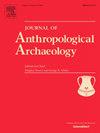考古学家的武器
IF 2.2
1区 社会学
Q1 ANTHROPOLOGY
引用次数: 0
摘要
本文考察了武器的物理化学性质,为考古学家识别战争和狩猎文物提供了一个框架。武器——任何由人类选择或制造的用于主动使用或打算用来伤害动物的物体——其功能通常基于或受最简单的物理定律和动物或人类生物学事实(即物理化学性质)的限制。通过对这些属性的研究,本文收集了跨文化数据来理解武器类型的形式、使用和发展。我们对冲击武器、火力武器和生物武器的调查强调,一般来说,发明或采用武器的顺序与有效射程的增加高度相关。本文章由计算机程序翻译,如有差异,请以英文原文为准。
Weaponry for archaeologists
This article examines the physio-chemical properties of weapons to provide a framework that archaeologists can use to identify artifacts of war and hunting. Weapons—any object selected or manufactured by hominins to be actively used or intended to be used to injure animals—have functions that are typically based upon or constrained by the simplest laws of physics and the facts of animal or human biology (i.e., physio-chemical properties). Building from an examination of these properties, this paper musters cross-cultural data to understand the form, use, and development of weapon types. Our investigation of shock, fire, and biological weapons highlights that the sequence of invention or adoption of weapons, in general, is highly correlated with increases in effective range.
求助全文
通过发布文献求助,成功后即可免费获取论文全文。
去求助
来源期刊

Journal of Anthropological Archaeology
Multiple-
CiteScore
4.00
自引率
11.10%
发文量
64
期刊介绍:
An innovative, international publication, the Journal of Anthropological Archaeology is devoted to the development of theory and, in a broad sense, methodology for the systematic and rigorous understanding of the organization, operation, and evolution of human societies. The discipline served by the journal is characterized by its goals and approach, not by geographical or temporal bounds. The data utilized or treated range from the earliest archaeological evidence for the emergence of human culture to historically documented societies and the contemporary observations of the ethnographer, ethnoarchaeologist, sociologist, or geographer. These subjects appear in the journal as examples of cultural organization, operation, and evolution, not as specific historical phenomena.
 求助内容:
求助内容: 应助结果提醒方式:
应助结果提醒方式:


